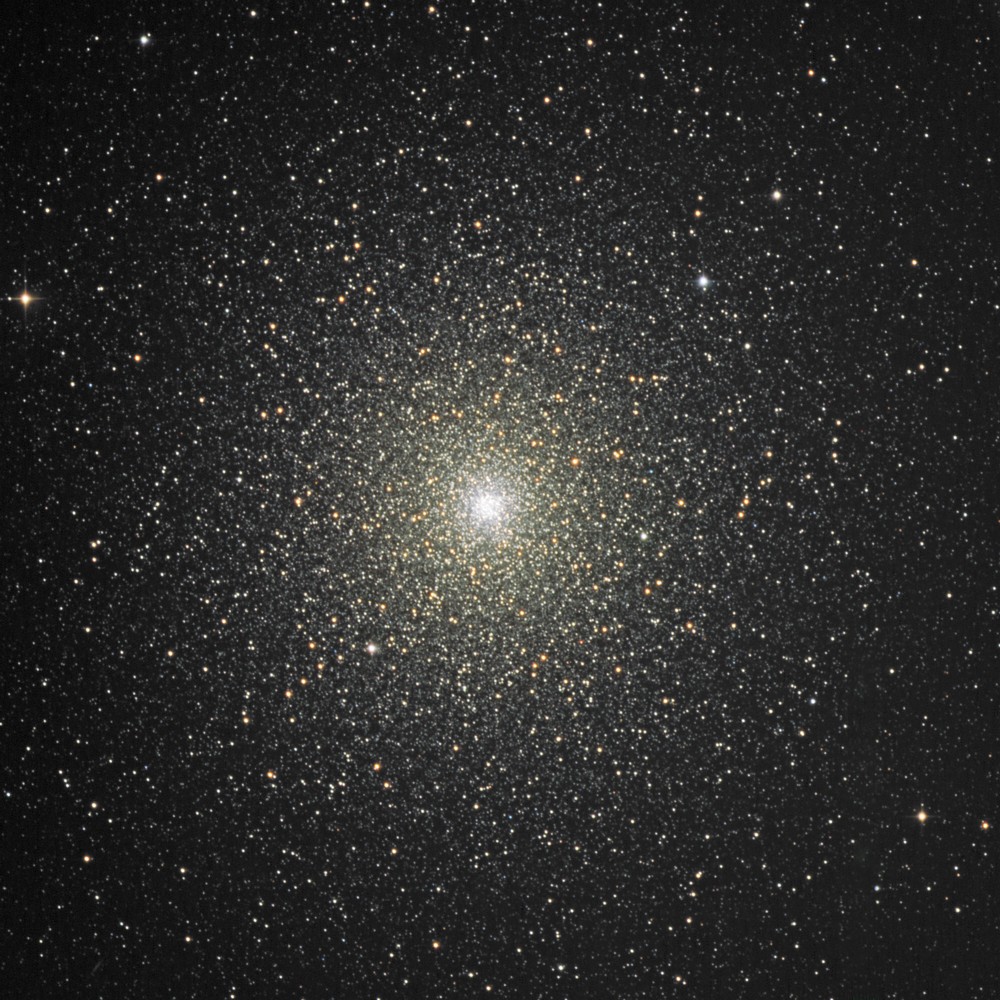Great globular cluster Omega Centauri. Note the lack of concentration
toward the center. Photo: Ignacio Diaz Bobillo.
Omega Centauri is certainly a great and fascinating cluster. For myself, I can't get over how "loose" it is, and lacking in a central concentration. Compare Omega Centauri with the second brightest globular cluster in the Milky Way, 47 Tuc, and note how the stellar concentration rises steeply toward the center in that other great globular.
I get the impression that if you were dropped somewhere close to but still some distance away from the center of Omega Centauri, you wouldn't be quite sure which way the center was, because much of Omega Centauri looks the same "all over"! But it sure is packed with stars. According to
Wikipedia, the average distance between stars in Omega Centauri is only 0.1 light-years.
Take a look at the "wildly colored" Hubble image of stars near the center of Omega Centauri. The colors are highly saturated and not "realistic". Nevertheless, the colors are "sort of true".
1) Note that the brightest stars are red. Indeed, the very brightest star in the image is also the reddest, and the reason why it is so red is because it is so bloated. This very bright red star is on its last legs, and its demise is near. It is a so-called asymtotic giant branch star of spectral class M. This star has already started pulsating, and eventually the pulsations will be so strong that the star will "shrug off" all of its outer atmosphere, after which it will become a white dwarf.
2) There are other red stars in this part of Omega Centauri, and there are orange stars there, too. It is not possible to tell at a glance if these are red giant stars or asymtotic giant branch stars, but in general the red giant branch stars are likely to be a little less red and a little more orange in color than the asymtotic branch stars, and also a bit less bright (although that is not always the case).
3) The red giant stars have more life in them than the asymtotic branch stars. They are not facing death yet, because first they will undergo a so called "helium flash", shrink rather dramatically and become so hot that they become blue. At this stage they are horizontal branch stars, fusing helium to carbon and oxygen in their cores. They are the blue stars in the picture. And when the blue stars run out of steam, they will turn into asymtotic giant branch stars.
4) Note the profusion of small white stars in the picture. They are, I would say, in most cases stars similar to the Sun. They are close to exhausting the hydrogen in their cores, after which they will become red giants.
6) Look carefully, and you can also see a lot of tiny red dots. They are red dwarfs.
7, 5)There are also a few tiny blue dots. They may be white dwarfs. Only the really tiny blue dots are likely to be white dwarfs. The "merely very small" blue stars are likely to be "extreme horizontal branch stars", which are hotter, bluer and much smaller than most other stars on the horizontal branch.
I really have more to say about Omega Centauri, but I'm getting a bit tired of myself here, and I suspect that you are too...

Ann
 Millions of Stars in Omega Centauri
Millions of Stars in Omega Centauri

